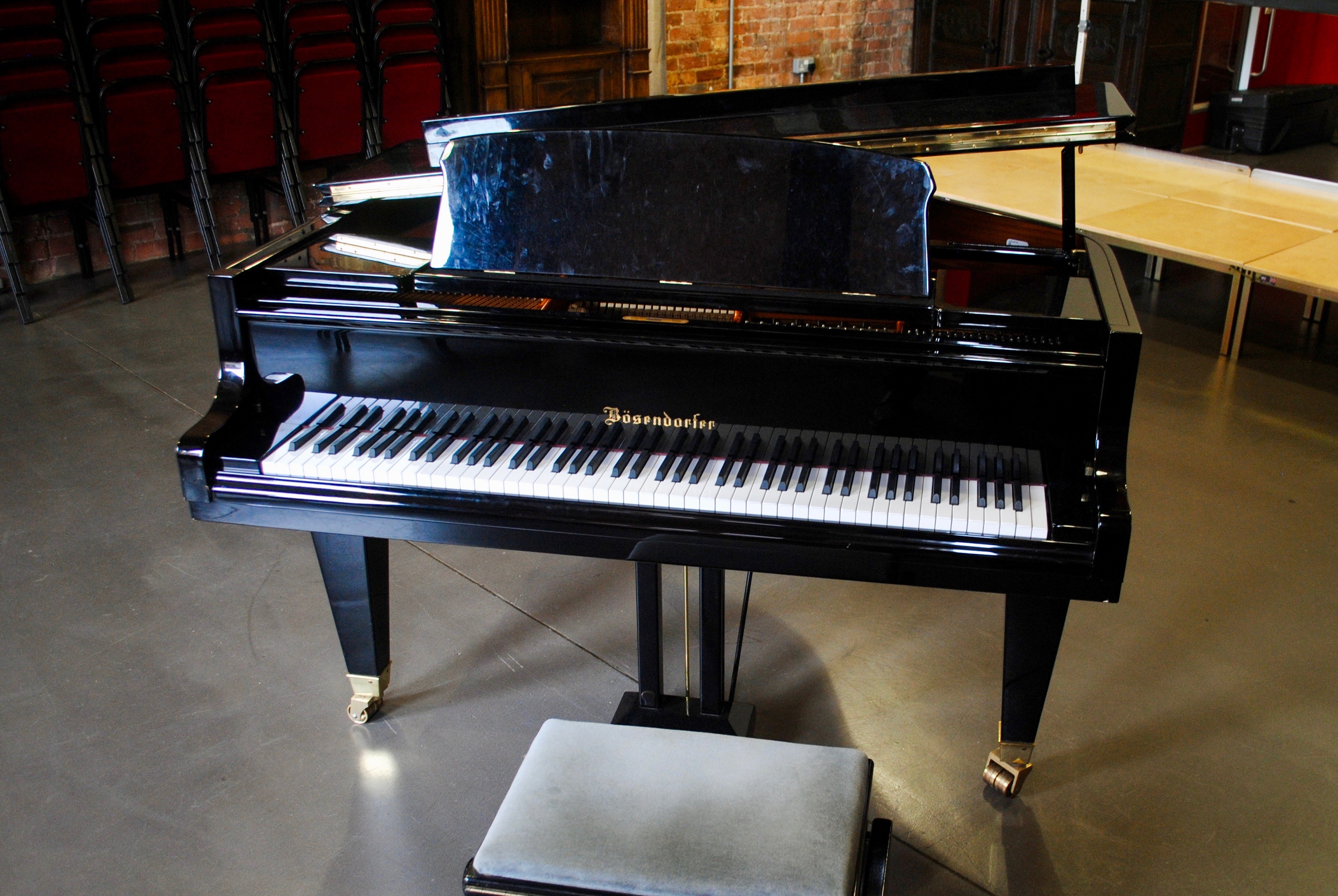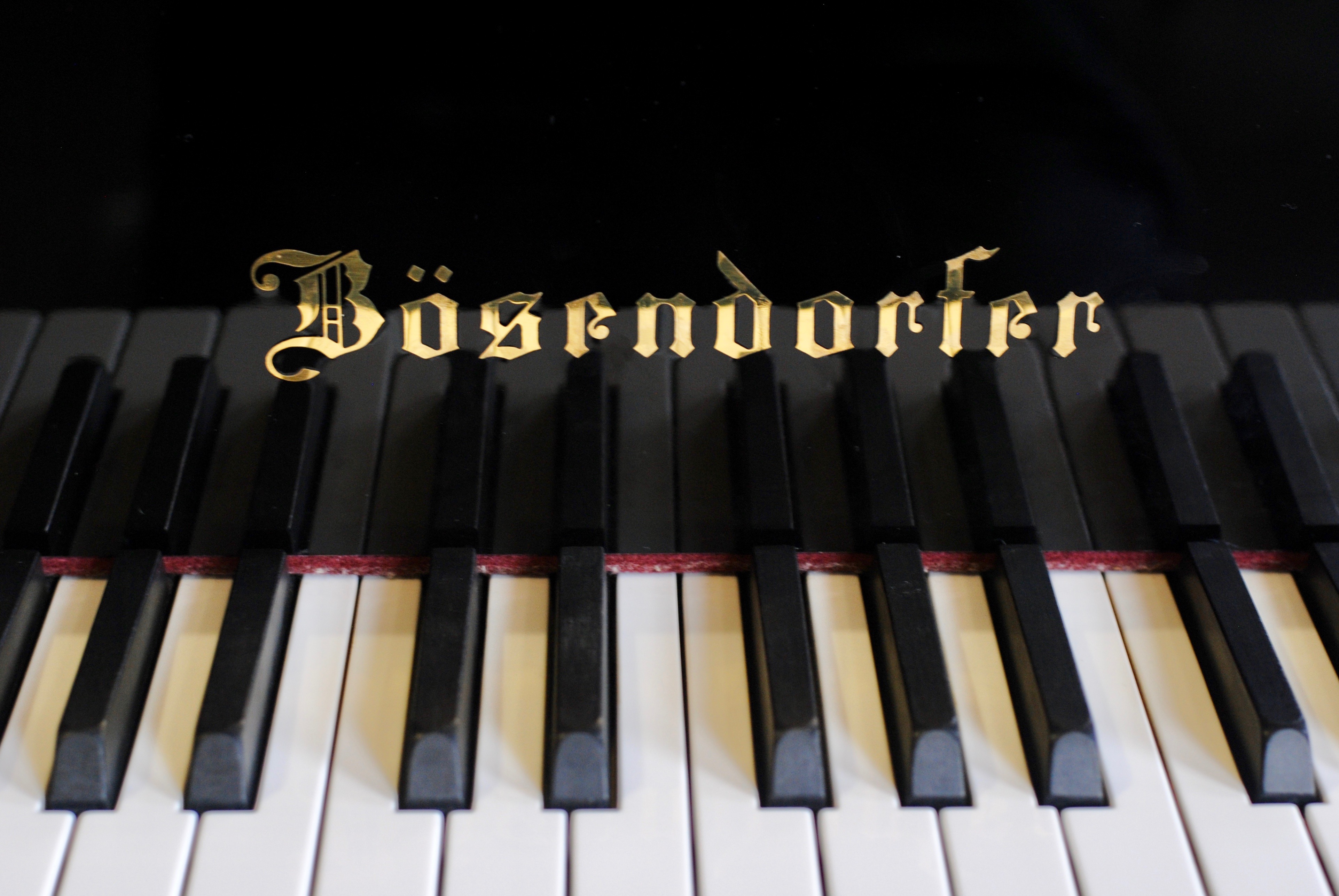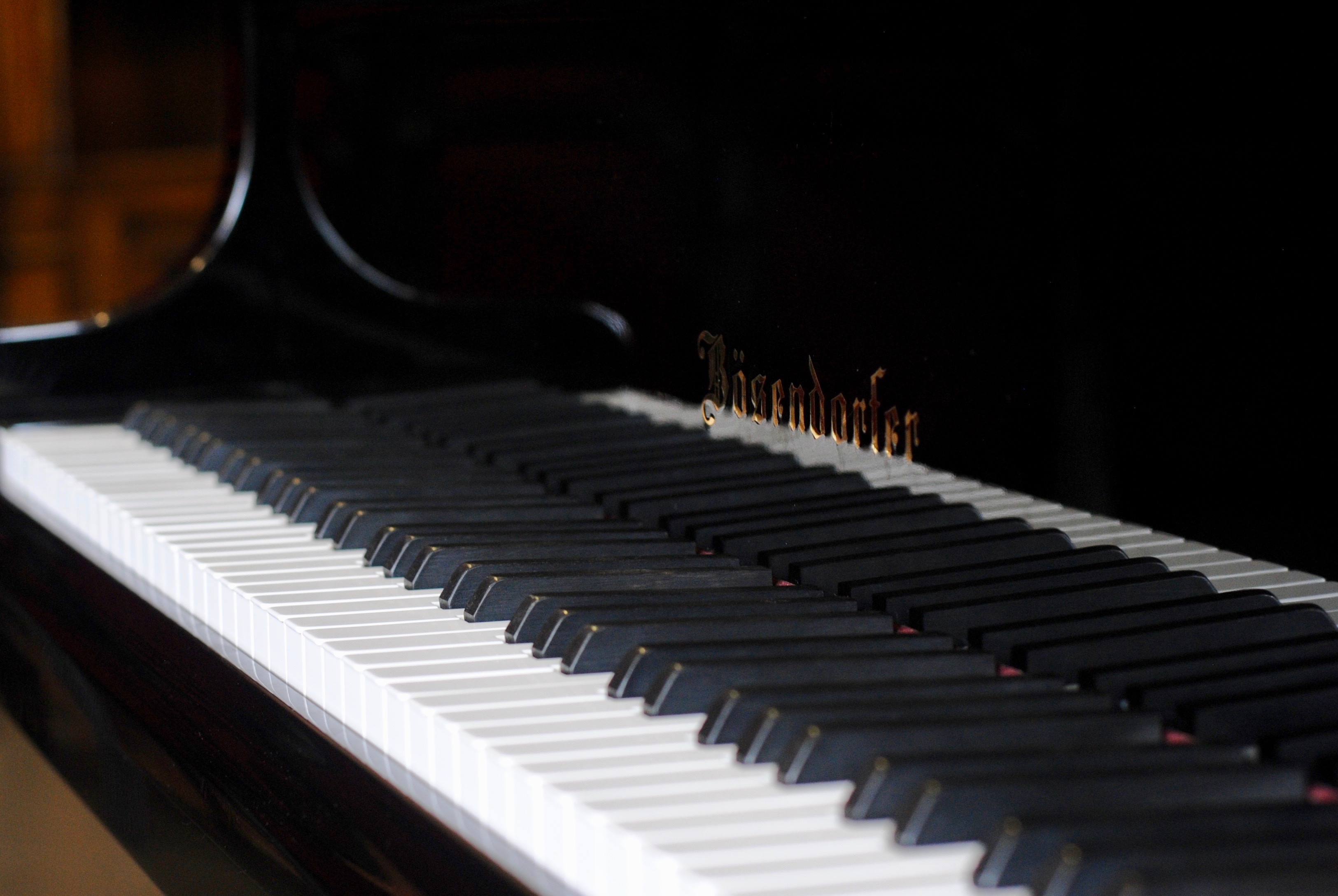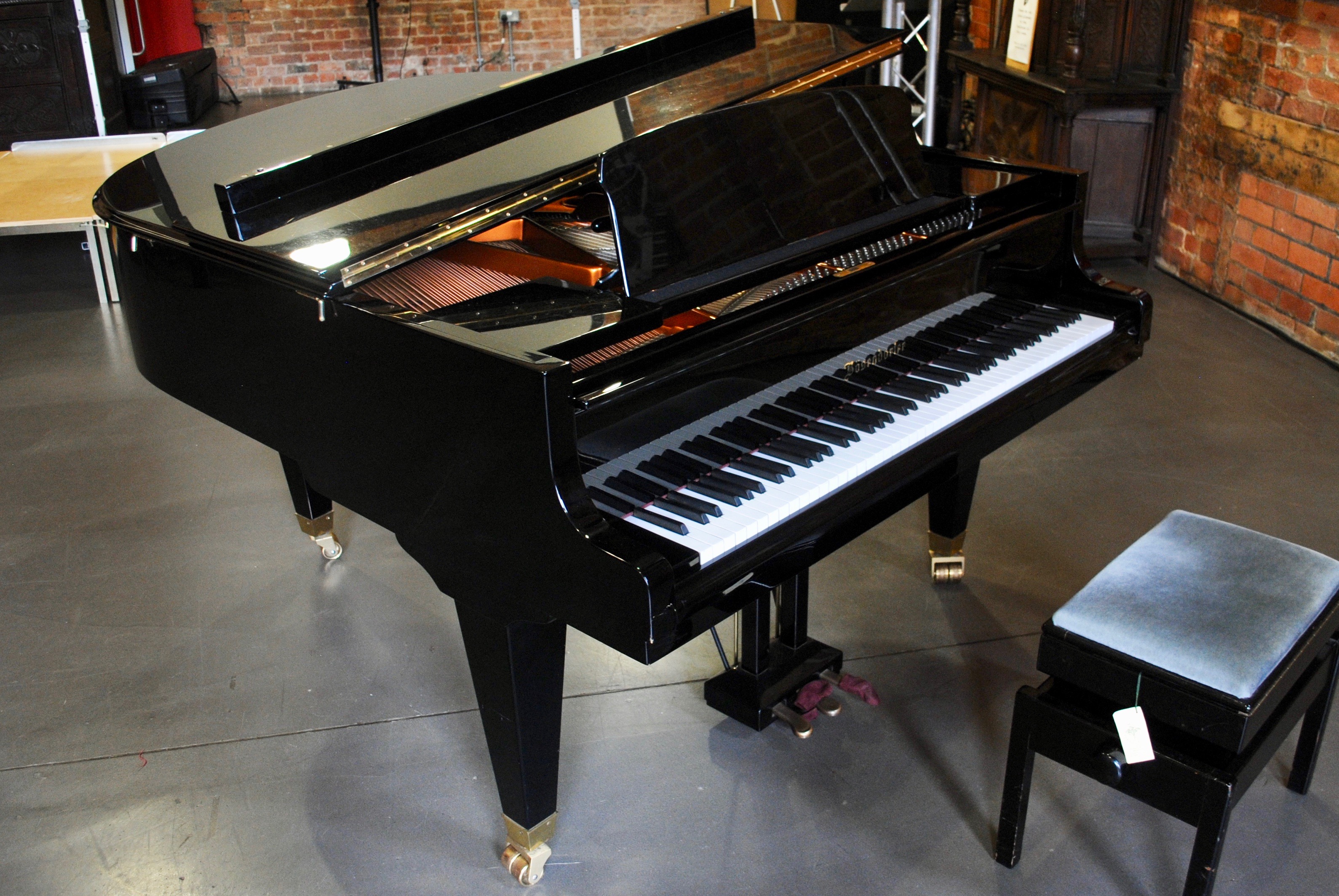Object of the Week: Burgess’s Bösendorfer Piano
-
Graham Foster
- 3rd July 2017
-
category
- Object of the Week

When visiting the International Anthony Burgess Foundation in Manchester, one of the first items of Burgess’s personal archive that can be seen is the Bösendorfer baby grand piano in the main Engine Room. This piano, which is still used for performances today, was bought by Burgess from Harrods in 1991. The following video shows him in the showroom, playing it for the first time.
The video, filmed by Liana Burgess, shows Burgess playing the opening bars of Claude Debussy’s ‘Sarabande Pour Le Piano’ (c. 1901).
Burgess played the piano throughout his childhood in Manchester, and the piano was a fixture of his childhood homes in Miles Platting and Moss Side. He often wrote about pianos in his fiction, in particular The Pianoplayers (1986), his novel about the silent cinemas and music halls of Manchester in the 1920s and 1930s. This novel is inspired by his father, Joseph Wilson, who played the piano in theatres, pubs and silent cinemas across the city.
Burgess remembers his father, Joseph Wilson, as a talented piano-player. He wrote that Joseph ‘had, without being a virtuoso, as full grasp of the capabilities of the piano as any professional performer I have ever known. He could switch from ragtime to Chopin; he was a brilliant improviser.’

One of the key episodes in The Pianoplayers is a marathon piano performance of thirty days and nights, possibly linked to Burgess’s experience in the 1970s, when he played a piano accompaniment to Fritz Lang’s silent film Metropolis, which in its original uncut form is four hours long.
When he left Manchester at the beginning of the Second World War, he performed in a military dance band in the Entertainments Section of the 54th Division of the British Army. This band, known as ‘The Jaypees’ (after their commanding officer, John Priestland), played a mixture of music hall and jazz standards. Burgess was often asked to stand in for the regular pianist. In 1943 he was posted to Gibraltar, where his continued to pursue his interest in music. His novel A Vision of Battlements (1965) is a fictionalised account of the wartime years on Gibraltar, and it features a protagonist who, like Burgess himself, harbours ambitions to become a composer.

Burgess composed for the piano throughout his life, and he owned several instruments, including a vintage piano which had once belonged to Josephine Baker. His compositions for the piano are inspired by a range of composers, including Erik Satie, Stravinsky, Bach, Debussy and Anton Webern. Burgess’s compositions have received considerable attention since his death in 1993. A selection of piano music has been recorded by the pianist Richard Casey and released as a CD and download titled The Piano Music of Anthony Burgess (Prima Facie Records, 2015). A second CD recording of 24 Preludes and Fugues was performed by Stéphane Ginsburgh and released by Naxos in 2018. Both recordings are available as downloads and via streaming services.
Burgess regarded the piano as a versatile instrument, and it is clear from audio recordings in the archive that he enjoyed playing it. As he wrote: ‘Other stretched strings or vibrating air columns are competent to express a single aspect of the universe and the human life that tries to feel at home in it, but only the piano can attempt, in however miniaturised a form, the total picture. That is why it continues to deserve our homage and our wonder.’

After Burgess had purchased his Bösendorfer, it was installed in his London flat during a period when he was composing prolifically. The last known piano work he composed was the Sonata No. 4 for Great Bass Recorder and Pianoforte, completed in November 1993, the month of his death.
The Irwell Edition of The Pianoplayers is available from Manchester University Press, with a new introduction, critical commentary, and other materials from the Burgess archive. For more information about The Irwell Edition of the Works of Anthony Burgess, click here.



